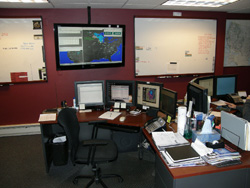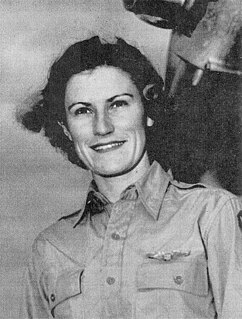Related Research Articles

The Federal Aviation Administration (FAA) is a governmental body of the United States with powers to regulate all aspects of civil aviation in that nation as well as over its surrounding international waters. Its powers include the construction and operation of airports, air traffic management, the certification of personnel and aircraft, and the protection of U.S. assets during the launch or re-entry of commercial space vehicles. Powers over neighboring international waters were delegated to the FAA by authority of the International Civil Aviation Organization.
The Federal Aviation Regulations (FARs) are rules prescribed by the Federal Aviation Administration (FAA) governing all aviation activities in the United States. The FARs are part of Title 14 of the Code of Federal Regulations (CFR). A wide variety of activities are regulated, such as aircraft design and maintenance, typical airline flights, pilot training activities, hot-air ballooning, lighter-than-air aircraft, man-made structure heights, obstruction lighting and marking, model rocket launches, model aircraft operations, Unmanned Aircraft Systems (UAS) and kite flying. The rules are designed to promote safe aviation, protecting pilots, flight attendants, passengers and the general public from unnecessary risk.
A biennial flight review or a periodic flight review is mandated for pilots by the aviation authorities of many countries. The review takes different forms in different countries.

The United States Astronaut Badge is a badge of the United States, awarded to military pilots, naval flight officers, navigators/combat systems officers, flight surgeons, and civilian pilots who have completed training and performed a successful spaceflight. A variation of the astronaut badge is also issued to civilians who are employed with the National Aeronautics and Space Administration as specialists on spaceflight missions. It is the least awarded qualification badge of the United States military.
The airline transport pilot license (ATPL), or in the United States of America, an airline transport pilot (ATP) certificate is the highest level of aircraft pilot certificate. Those certified as airline transport pilots (unconditional) are authorized to act as pilot in command on scheduled air carriers' aircraft under CFR 14 Part 121. In the UK, pilots must hold an ATPL before they can be pilot in command on an aircraft with 9 or more passenger seats.

Homebuilt aircraft, also known as amateur-built aircraft or kit planes, are constructed by persons for whom this is not a professional activity. These aircraft may be constructed from "scratch", from plans, or from assembly kits.
Pilot licensing or certification refers to permits for operating aircraft. They are issued by the Civil Aviation Authority (CAA) in each country, establishing that the holder has met a specific set of knowledge and experience requirements. This includes taking a flying test. The certified pilot can then exercise a specific set of privileges in that nation's airspace. Despite attempts to harmonize the requirements between nations, the differences in certification practices and standards from place to place serve to limit full international validity of the national qualifications. In addition, U.S. pilots are certified, not licensed, although the word license is still commonly used informally. Legally, pilot certificates can be revoked by administrative action, whereas licensing requires intervention by the judiciary system.

Pilot certification in the United States is typically required for an individual to act as a pilot-in-command of an aircraft. It is regulated by the Federal Aviation Administration (FAA), a branch of the U.S. Department of Transportation (USDOT). A pilot may be certified under 14 Code of Federal Regulations (CFR) Part 61 or 14 CFR Part 141. Pilots may also be certified under 14 CFR Part 107 for commercial drone operations.
An instrument rating is required for a pilot to fly under instrument flight rules (IFR). In the United States, the rating is issued by the Federal Aviation Administration.

A flight dispatcher assists in planning flight paths, taking into account aircraft performance and loading, enroute winds, thunderstorm and turbulence forecasts, airspace restrictions, and airport conditions. Dispatchers also provide a flight following service and advise pilots if conditions change. They usually work in the operations center of the airline. In the United States and Canada, the flight dispatcher shares legal responsibility with the commander of the aircraft.
L.A.B. Flying Service was an American airline based in Haines, Alaska. It operated scheduled, charter and sightseeing flights in Southeast Alaska. Its main base was Haines Airport, with a hub at Juneau International Airport.
The Charles Taylor Master Mechanic Award is an honor presented by the United States Federal Aviation Administration in honor of Charles Taylor, the first aviation mechanic in powered flight. The award recognizes the lifetime accomplishments of senior aviation mechanics. Taylor served as the Wright brothers' mechanic and is credited with designing and building the engine for their first successful aircraft.

A commercial astronaut is a person trained to command, pilot, or serve as a crew member of a privately funded spacecraft. This is distinct from an otherwise non-government astronaut, for example Charlie Walker, who flies while representing a non-government corporation but with funding or training or both coming from government sources.
In the United States, there are three classes of medical certifications for pilots; such certificates are required to legally exercise the privileges of a Pilot exercising the privileges of either a Private, Commercial or Airline Transport Pilot license. Medical Certificates are not needed for Glider, Balloon, Recreational or Sport Pilot certifications. Each certificate must be issued by a doctor approved by the Federal Aviation Administration to a person of stable physical and mental health.
Ground Instructor is a certificate issued in the United States by the Federal Aviation Administration. There are three classes of holder, licensed to provide the ground instruction element in the training of three groups:

In aviation, V-speeds are standard terms used to define airspeeds important or useful to the operation of all aircraft. These speeds are derived from data obtained by aircraft designers and manufacturers during flight testing for aircraft type-certification testing. Using them is considered a best practice to maximize aviation safety, aircraft performance or both.

Iris C. Cummings, also known by her married name Iris Critchell, is an American aviator and former competition swimmer who represented the United States at the 1936 Summer Olympics in Berlin, Germany. After an active athletic career in swimming, which included a reign as U.S. national 200-meter breaststroke champion from 1936 to 1939, she was accepted into the University of Southern California's first Civilian Pilot Training Program in 1939. After graduation, she worked as a flight instructor prior to being selected to serve her country during World War II as a member of the Women Airforce Service Pilots (WASPs). Following the conflict, she returned to California, where she developed and taught a curriculum on civilian flight for veterans returning from the war at the University of Southern California.
Federal Aviation Administration v. Cooper, 566 U.S. 284 (2012), was a United States Supreme Court case in which the Court held that "actual damages" under the Privacy Act of 1974 is not clear enough to allow damages for suits for mental and emotional distress. The reasoning behind this is that the United States Congress, when authorizing suit against the government, must be clear in waiving the government's sovereign immunity.
Ruth Martin Jefford was an air taxi pilot in the U.S. state of Alaska and the first woman licensed to be a flight instructor out of Merrill Field. Jefford was a violinist who became a co-founder of the Anchorage Symphony Orchestra. During World War II, she entertained at the United Service Organizations in Alaska and transported medical supplies for the Red Cross Motor Corp. She was the first woman in Alaska to receive the Wright Brothers Master Pilot Award. She was inducted into the Alaska Women's Hall of Fame in 2009.

Stephen Marshall Dickson is an American former Air Force pilot and Delta Air Lines executive who currently serves as the Administrator of the Federal Aviation Administration.
References
- ↑ "Wright Brothers Master Pilot Award" (PDF). Federal Aviation Administration. Retrieved July 23, 2012.
- ↑ "Master Listing of WBMPA". Federal Aviation Administration. Retrieved July 23, 2012.